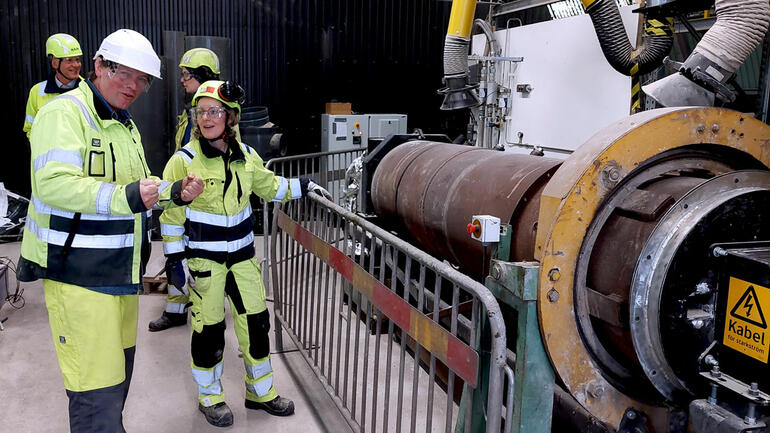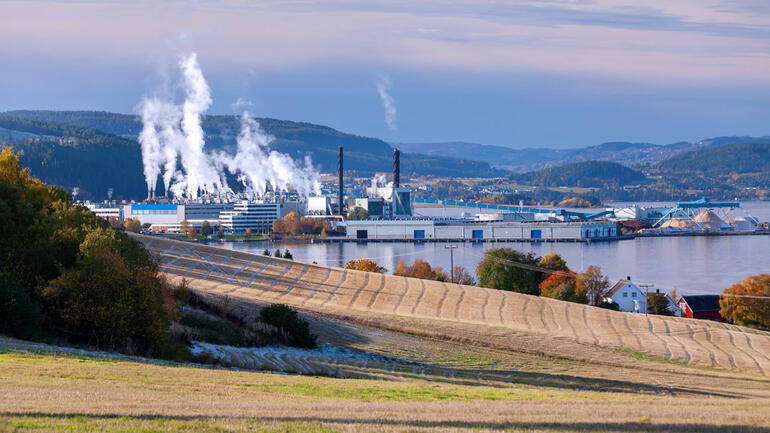Traditionally, fossil fuels such as coal, oil, and natural gas have been the primary energy sources for industries, but these are known to produce significant CO2 emissions. Now, a new EU-funded research project called “Electrification of high temperature and flexible technologies for transforming cement, lime, and pulp industry (ELECTRA)” aims to test new solutions for electric heating.
The research project is funded by EU’s key funding programme for research and innovation, Horizon Europe. The University of South-Eastern Norway (USN) is the only Norwegian academic participant among a total of 17 European partners.
The project focuses on using electricity to transform production processes in the cement, lime, and paper industries. The results are expected to contribute to the ambitious goal of eliminating carbon dioxide emissions from these sectors, potentially accelerating sustainable efforts by up to five years.
"By using low-emission electricity instead of fossil fuels in the production process, ELECTRA has the potential to eliminate CO2 emissions from sectors responsible for approximately 7 percent of the world’s CO2 emissions, including the cement industry", says Lars Andre Tokheim.
ALSO READ: Supporting the safe integration of drones into airspace
Aim to use electric heating
He is a professor at the Department of Process, Energy and Environmental Technology, and USN's project manager in ELECTRA. The overall project budget is around 200 million Norwegian kroner, with approximately 8 million allocated to USN.
The project involves partners from nine countries covering the entire value chain for the cement, lime, and paper process industry, including research, technology providers, business development, investors, and end-users. Norway’s research institute Sintef is also part of the project.
ELECTRA will work on developing various electrification concepts and reactors. For instance, in the cement industry, calcination is a crucial part of cement production, where raw materials are heated to approximately 900 degrees Celsius. Currently, this process relies on the combustion of various fuel types, but ELECTRA aims to achieve it using electric energy.

"An important task for USN includes designing and conducting experiments with a fluidized reactor developed in another research project that was recently completed. Additionally, we will explore how different electrification concepts can be effectively integrated into existing factories" says Tokheim.
The ELECTRA project will also attempt to electrify the rotary kiln, where clinker is produced at temperatures exceeding 2000 degrees Celsius. This part of the production process is even more challenging to electrify due to the extremely high temperature, necessitating the use of a technology known as plasma technology.
Tokheim explains:
"The project’s goal is to develop a full-scale emissions-free, electrically heated production process for cement and lime. If the project’s objectives are met, it will eliminate the need for fossil fuels while simultaneously producing a pure stream of CO2 from the calcination of limestone. This CO2 can be stored or utilized for various purposes."
ALSO READ: Participation in EU research on infectious diseases on cruise ships
Collaborates closely with industry
USN has long collaborated closely with the industry on several national research projects related to process optimization, emission reduction, CO2 capture, and electrification.
Recently, a doctoral thesis was completed at USN in collaboration with Heidelberg Materials, formerly known as Norcem. This work confirms that emissions from the calcination process can be significantly reduced by replacing coal with electric power.
"In the ELECTRA project, USN participates in six out of eight work packages. This participation provides us with the opportunity to continue research on electrified calcination in the cement industry, and it is crucial for us to take a step forward. Both USN and Heidelberg Materials view the ELECTRA project as a natural and necessary intermediate step before we can test the technology at one of the company’s cement factories," explains Tokheim.

